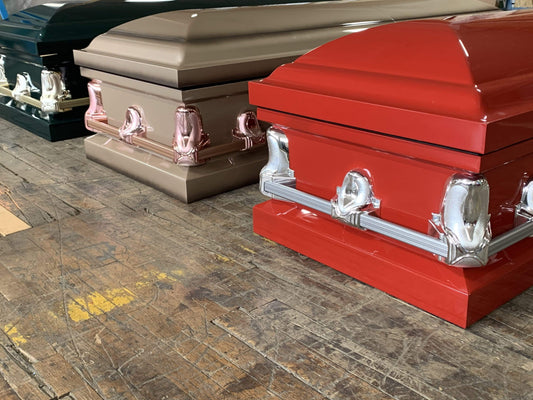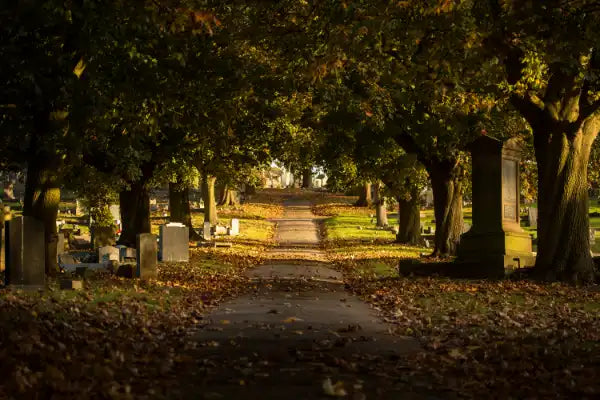Introduction
Wondering what the carbon footprint of cremation is? Here’s a general overview explaining how this tradition affects the environment, and whether there are alternatives to cremation to make it more eco-friendly.
Cremation And Environment: Is It Bad?
To understand the impact of cremation on the environment, we’ll begin by addressing how cremation works. Traditionally, cremation is the ritual of burning a deceased person’s body to ashes, usually carried out after a funeral ceremony. While not the least eco-friendly means of handling the remains of the deceased, cremation does carry significant consequences for the environment, and it is essential to be aware of them.
To be specific, the standard amount of carbon emitted from cremating a body equals about the amount released from two full gas tanks in an automobile. Hence, this ritualistic practice undoubtedly increases the levels of carbon dioxide in the air. In certain cases, when a person is cremated with teeth fillings, cremation can also release vaporized mercury into the environment.
What Is Less Eco Friendly: Cremation Or Traditional Burial?
Both cremation and burials have their own impact on the environment, but the difference between both can be important when considering which to choose. We’ve already established the impact of cremation on environmental carbon emissions, but let’s weigh it against burials- another common means of handling remains.
As of now, there is no absolute guarantee that cremations are better than traditional burials when it comes to environmental impact. However, most people argue that cremation tends to be the more eco-friendly option worth considering. This preference is rationalized as follows: cremation doesn’t require the use of substantial resources like burials do. For instance, in the average cemetery in America, the amount of wood used in coffins buried beneath a 10-acre plot is enough to build 40 average-sized homes.
Additionally, to prepare the body for burial, resources are required. The body is typically pumped with embalming fluid. Over time, as the coffin breaks down, the embalming fluid can leak into the soil. Unfortunately, not much research has been conducted for us to better understand how embalming fluid contaminating the soil can impact the environment. However, there is substantial evidence suggesting that the chemicals in this fluid are carcinogenic. Traditional burials also require the use of space, which most people might consider a valuable resource that’s worth conserving. For these reasons, the general consensus is that burials remain the less eco-friendly option if we solely look at their long-term environmental impact.
Is There A Way Of Making Cremations More Eco Friendly?
Yes, there is a gentler and more eco-friendly alternative to traditional cremation called green cremation pioneered by Mayo Clinic. Traditionally, cremation is flame-based, but there are no flames involved in green cremation. Instead, green cremation uses the natural process of alkalinity and water to reduce the body's basic elements of bone ash. This process is known as bio-cremation or alkaline hydrolysis. Just like its traditional counterpart, green cremation can also reduce a body to ashes which are returned to the deceased’s family and loved ones.
The carbon footprint is reduced to 75% of what it would’ve been using flame-based cremation. Green cremation also eliminates concerns that have to do with mercury vapors. Additionally, it also conserves energy as it uses about 1/8 of the energy used in flame-based cremation. Green cremation is available in certain U.S states and is currently not legal all over the country.
Are There Other Eco Friendly Cremation And Burial Options?
When deciding how to handle remains, traditional burials and cremations aren’t your only options. You can also opt for green burials. These types of burials differ from their traditional counterparts in a few notable ways. Firstly, green burials do not involve using embalming fluid. Additionally, when an individual or family opts for a green burial, they essentially choose to bury a body directly without a casket directly into the ground. However, one can choose to cover the body with a burial shroud that is biodegradable.
Other options to choose from are cremating at funeral pyres, and opting for burial at sea, but both these methods have their own criticisms. Ultimately, whether cremation is bad for the environment or not is up for debate, but there is significant evidence that its impact is better than that of traditional burials. However, there are more eco-friendly burial and cremation options to choose from, which could lower your carbon footprint even more.
Take stock of all your options before taking a call on whether or not to cremate or bury remains. If you opt for a burial, Titan Casket can make the process of securing a casket hassle-free. With Titan Casket, you get the benefits of an incredibly fast 1-2 day dispatch period and 2-7 day delivery time, making your funeral arrangements frustration-free, so that you can be with your loved ones.

![Upgrade to Premium Weight [18-gauge steel]](http://titancasket.com/cdn/shop/products/casketthicknesswithnumbers.png?v=1680642906&width=533)



